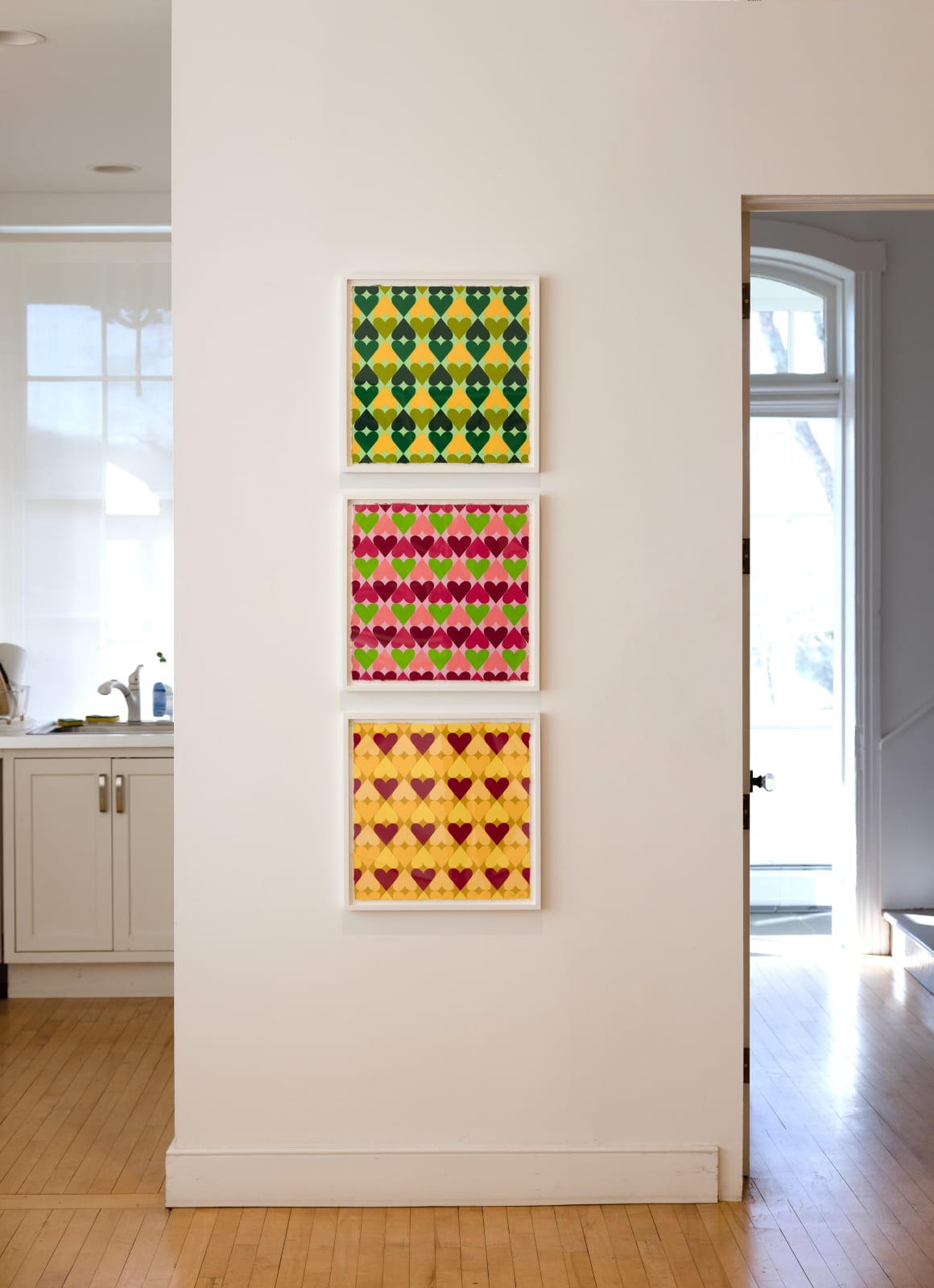Polly Apfelbaum
Fuji DHM-11 Kozo Misumi 536gsm
(41.3 x 41.3 cm)
Heart and Soul, a portfolio of nine woodblock prints, was developed in tandem with a series of monoprints, titled There Are Many Hearts, both of which feature an interlocking grid of hearts in a variety of colors and sizes. This pattern draws from Pennsylvania German folk art and twentieth-century modernism, which Apfelbaum has adapted into a repeating yet playful design as she new chromatic combinations in a range of colors and sizes.
The folk art of Pennsylvania that once decorated Apfelbaum's childhood home and has long fascinated her has now served as the impetus for her most recent prints. Specifically, Apfelbaum's new works have been inspired by the Pennsylvania German who have often sewn heart shapes into quilts and included them on hand-painted "barn stars" that adorn the sides of many of the region's agricultural buildings, as well as incorporating them on Fraktur - illuminated calligraphic drawings used to document occasions such as births, baptisms, and new homes.
At the Durham Press Studio, Apfelbaum first used the featured heart shape to create monoprints, conceiving an interlocking composition that recalls the designs of Alexander Girard and other modernists. Featuring square formats with 14, 25, or 79 inch edges, the three sizes range from intimate to all-embracing, with various scales and palettes imbuing each with a singular temperament – an attribute affirmed by the series title, There Are Many Hearts, which references a valentine Apfelbaum’s great aunt made for her grandmother. “There are many hearts,” it reads. “Broken, yellow, sad, beware, black, one pure gold.”
These monoprints quickly gave rise to Heart and Soul. Compared to many other of Apfelbaum’s collaborations with Durham Press, often comprised of dozens and sometimes hundreds of separately inked blocks, these prints were created through a relatively pared-down process. As a result, the artist chose more experimental palettes – rather than focusing on primary and secondary hues, she mixed colors into colors, yielding unique shades that she then combined on paper in various compositions. Some, whether by uniting one chromatic family or pairing complimentary colors, are easy to love at first sight. Others challenge the eye, revealing conflict and tension – but perhaps leading to a greater love in time.



